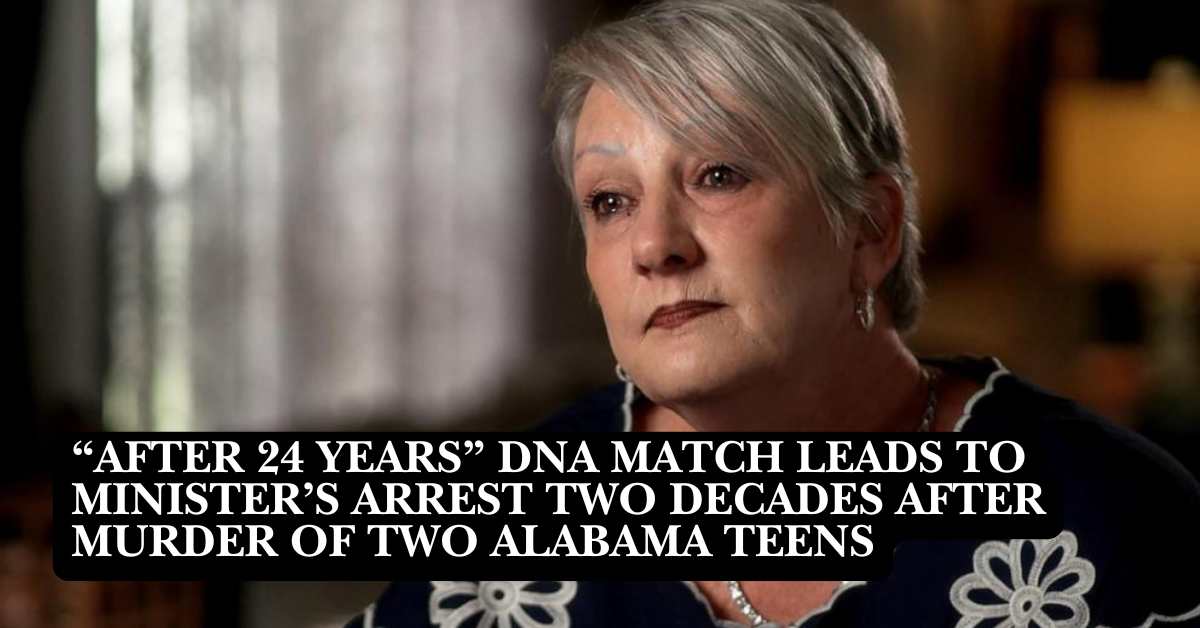In a breakthrough that has stunned the community, a DNA match has led to the arrest of a prominent Alabama minister in connection with the 2001 murders of two local teenagers. The case, which had remained unsolved for more than two decades, gained new momentum after advancements in forensic technology linked the suspect to the crime scene.
The tragic deaths of 16-year-old Sarah Miller and 17-year-old Tyler Davis shook the small town of Pine Grove, Alabama, when their bodies were discovered in a remote area outside the city limits in late 2001. Despite extensive investigations and hundreds of leads, the case went cold, leaving families, friends, and law enforcement frustrated by the lack of answers.
That all changed late last month when investigators, revisiting the cold case with newly developed forensic tools, matched DNA found at the crime scene to Reverend Samuel Carter, a well-known and respected minister in the Pine Grove area. The match, which came after the state’s use of familial DNA databases, prompted authorities to move quickly.
Carter, 53, was arrested on March 3, 2025, at his home without incident. He is facing two charges of first-degree murder for the deaths of Miller and Davis. According to court documents, authorities believe that Carter may have known the victims through his work as a youth minister at a local church, but the full details of the case remain under investigation.
The arrest of Carter, who had been a trusted member of the community for years, has shocked many. For those who knew him, the news has been difficult to reconcile. Reverend Carter had been a prominent figure in Pine Grove, serving the local church and hosting youth programs that many families in the area had relied on.
“It’s just unimaginable. I never saw this coming,” said Rachel Thompson, a lifelong member of Carter’s congregation. “We trusted him with our children. How could someone we thought was a spiritual leader be capable of something like this?”
Authorities are still piecing together the details of the case, but they believe that Miller and Davis were abducted while walking home from a local event and were killed shortly thereafter. Forensic evidence at the scene initially provided few clues, and at the time, investigators struggled to find any substantial leads. In recent years, however, advancements in DNA analysis have opened new possibilities for cold cases across the country.
District Attorney Amanda Walters, who has been overseeing the investigation, expressed both relief and anger at the discovery. “This is a tragic day for our community,” she said. “But after 24 years of waiting for answers, we can finally tell Sarah and Tyler’s families that justice is on the horizon.”
The families of the victims, while grateful for the breakthrough, have expressed mixed emotions as they process the events. Tyler’s mother, Laura Davis, spoke to the press after the arrest. “It’s been a long, painful journey, and while this brings some closure, it doesn’t bring back our children,” she said, fighting back tears. “We’ve lived with the loss for so many years, but we’re thankful to finally have the truth.”
Carter is currently being held in the Pine Grove County Jail without bond. His defense attorney, James Lowell, issued a statement denying the allegations, calling the arrest “premature” and asserting that Carter would be fully exonerated in court.
A preliminary hearing has been scheduled for later this month. As the case progresses, more details are expected to emerge. In the meantime, law enforcement officials have vowed to continue investigating other aspects of the case, with the possibility of additional charges pending.
For the families of Sarah Miller and Tyler Davis, the arrest brings a long-awaited glimmer of justice, though the wounds of loss are likely to never fully heal.
“We’ve waited for this day for so long,” said Sarah’s father, Michael Miller, as he wiped away tears. “But it’s still hard to accept that the man we trusted was the one who took them from us.”
The Pine Grove community remains in shock as they come to terms with the arrest, and the nation watches closely as the case unfolds, hoping for answers and accountability in one of the most haunting mysteries of the decade.











